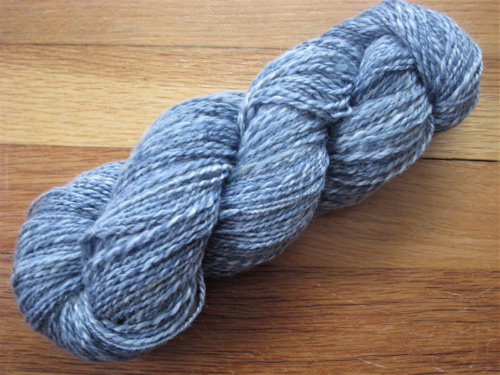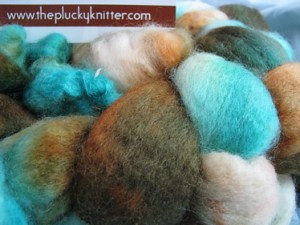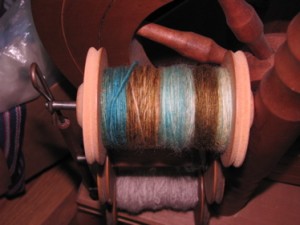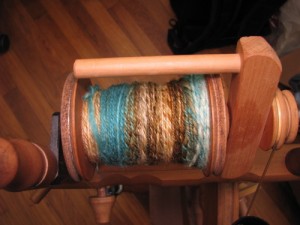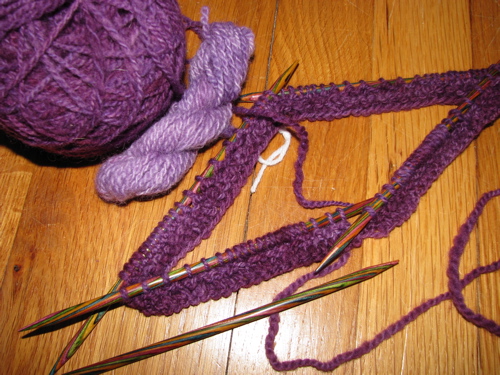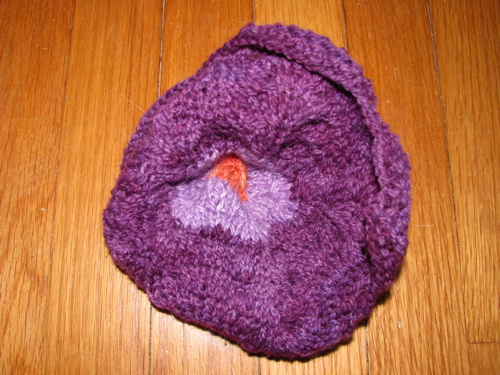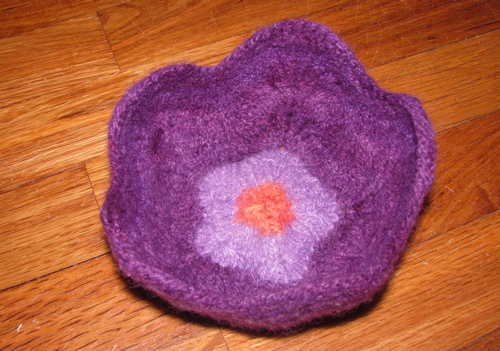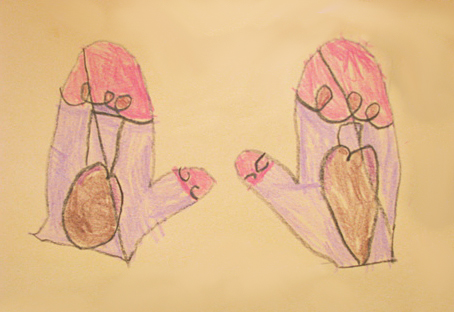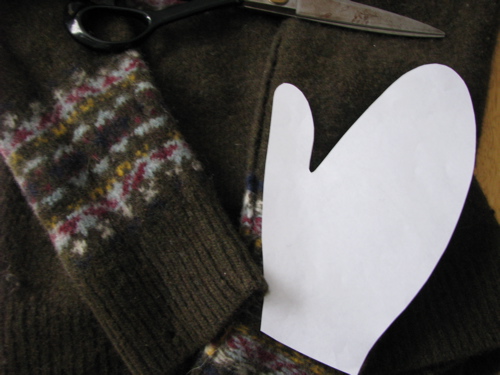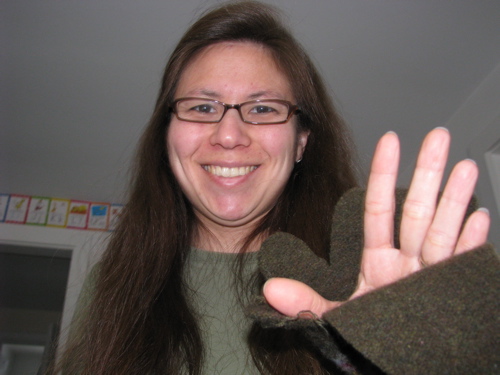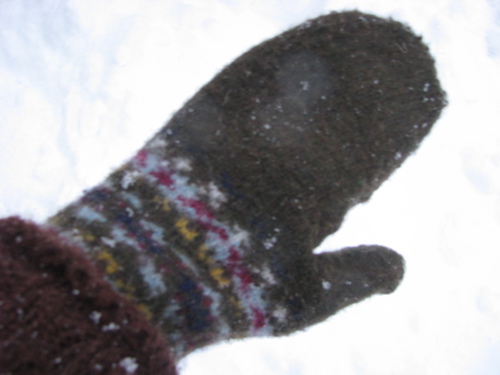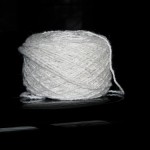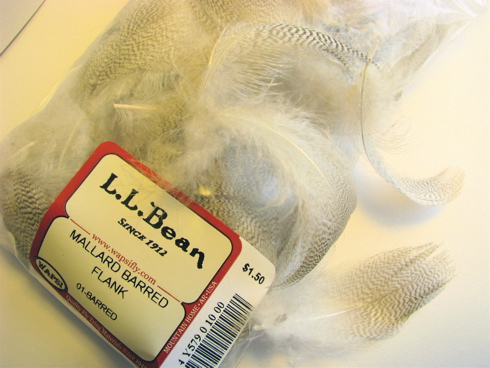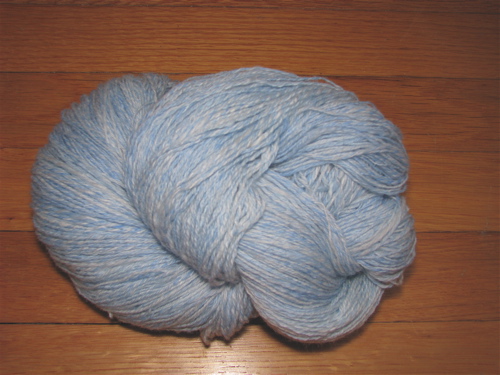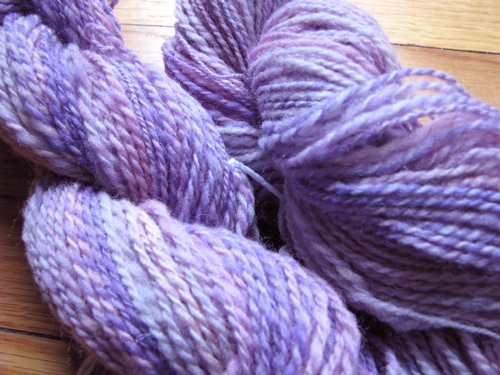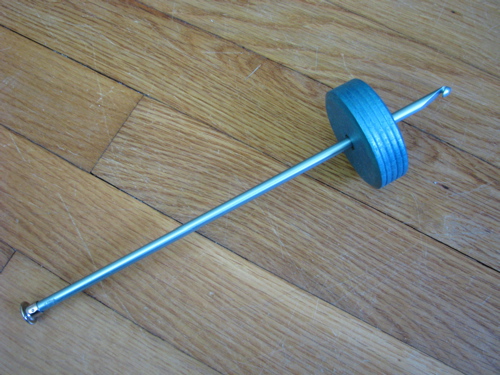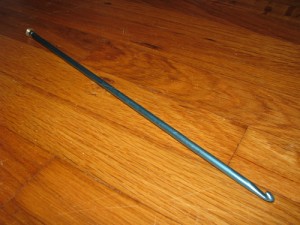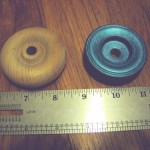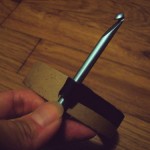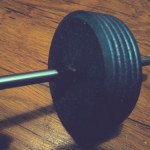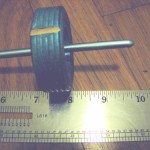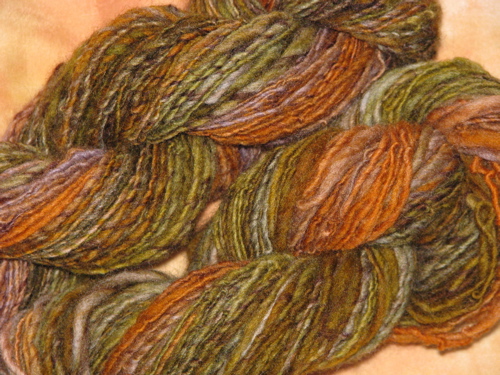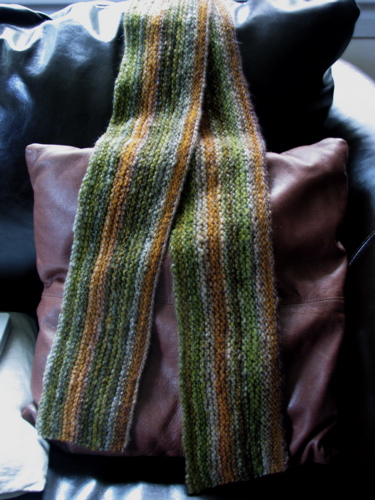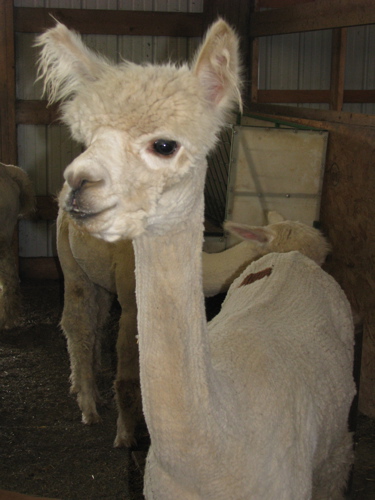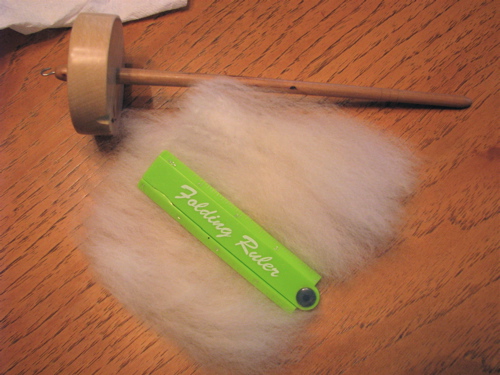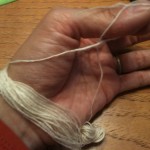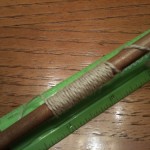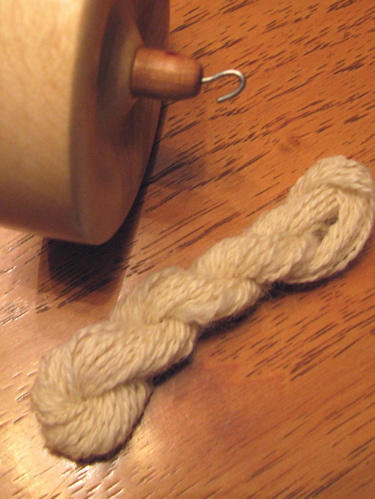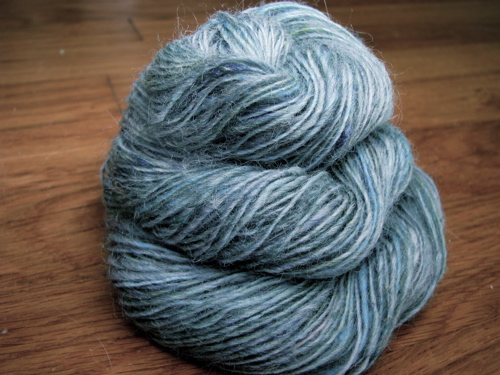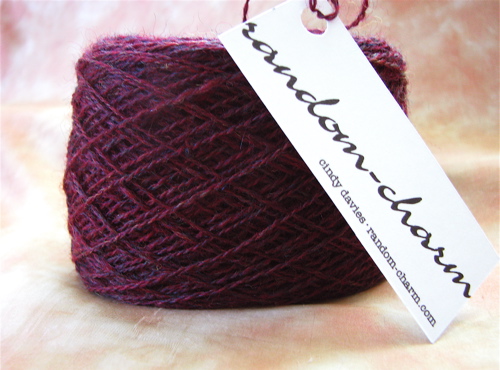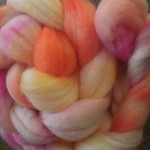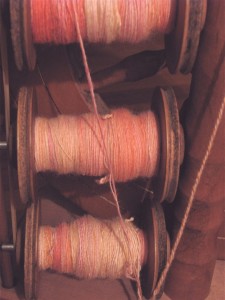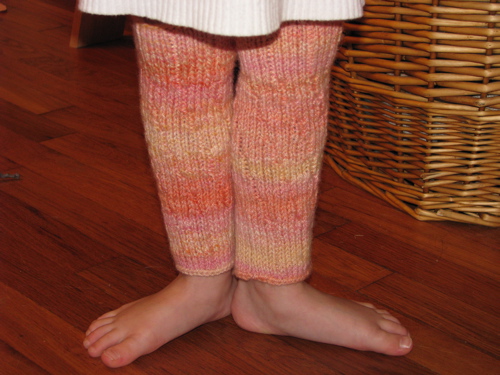Spinning purists beware . . .
Months ago I was spinning some nice wool top and had the realization that my left hand was actually doing very little. Some minor tension, a little adjustment here and there—actually my right hand wasn’t doing that much either, I just had the tension on the wheel set a bit high and I was allowing that tension to draft the top right out of my hand. My mind raced ahead and wondered if it was possible to spin with just one hand. I immediately dismissed the possibility as I’d never heard or seen it mentioned anywhere. Being self-taught, I felt too silly to ask anyone online in the various spinning forums I have poked my head into virtually. I occasionally played around to see if I could spin without using my left hand and would manage a yard or two.
I didn’t really pursue it until several outside influences came together. My spinning godmother, Annie, unexpectedly sent me a book called Spinning for Softness and Speed by Paula Simmons. Within the pages was a section specifically about spinning with one hand! The technique she described was a little different from what I was doing but I was encouraged by the possibility that it could be done at all and her explanation helped my own process along.
The other influence that gave me a sense of purpose was a post on the New England Textile Arts (NETA) forum from one of the members asking about spinning with one hand. While she received many responses, no one had ever seen or tried it before. I reluctantly admitted I had tried it and recommended the above book. Several weeks ago I met Beth, a.k.a yarndemon, at NETA’s annual get-together in Freeport. (Go see Beth’s lace socks knit with one hand!) We had chatted via e-mail but she wanted to see how I was actually doing the spinning so I practiced quite a bit beforehand. We discussed various techniques, wool preparations and experiences pertaining specifically to spinning with one hand. She was encouraged that we were using a similar technique and achieving similar results. I was encouraged that I was able to spin with one hand (or at all for that matter) in front of strangers!
Since my discussion with Beth, I’ve been able to sort out a bit more about what was working and not working for me. I’d had several attempts that looked much worse than my very first spindle spinning. There were long thick barely spun sections and tightly overspun thin sections. What I figured out was that although I was spinning a woolen yarn, the best prep for my one-handed method was actually combed top. (Any purists still reading may now keel over.) I finally managed a soft single out of naturally black merino that was still thick and thin but with just the right amount of spin. In fact, it was not unlike a commercial thick and thin singles yarn from a popular manufacturer. The blue in the photo below is commercial Malabrigo Aquarella and the dark merino is my handspun.
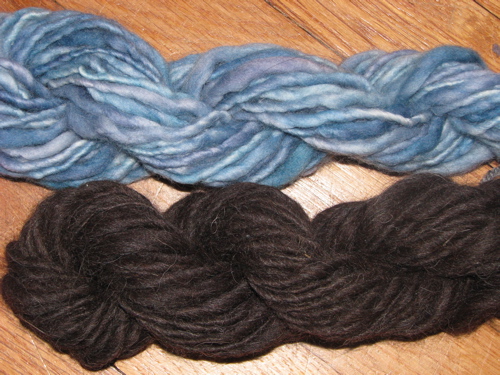
My fourth attempt involved a merino/bamboo/nylon combed top from Spunky Eclectic. I had intended to spin this semi-woolen with two hands to a two-ply fingering or sport weight. It slid so well out of my hand that I decided to try spinning one handed and see if I could get a more even single with a smaller grist. Success! I did not hold myself to spinning the entire 3 ounces one-handed but I’d say at least half of it was spun one-handed. I haven’t wet-finished it but I’m going to guess I’ve managed an airily soft, fairly even sport/DK weight at 230 yards from 3 ounces. While I don’t have a reason to become fully proficient at this technique it has been an interesting experience and I have learned quite a bit about the way I spin from the attempt.
I know that some of you spinners out there are thinking this post is worthless without video. Sorry, while I can spin with just my right hand, my left hand could not manage holding the camera! And I think I’m going to need a wild handpaint to really show what’s going on. So please comment if you’d like to see video.
